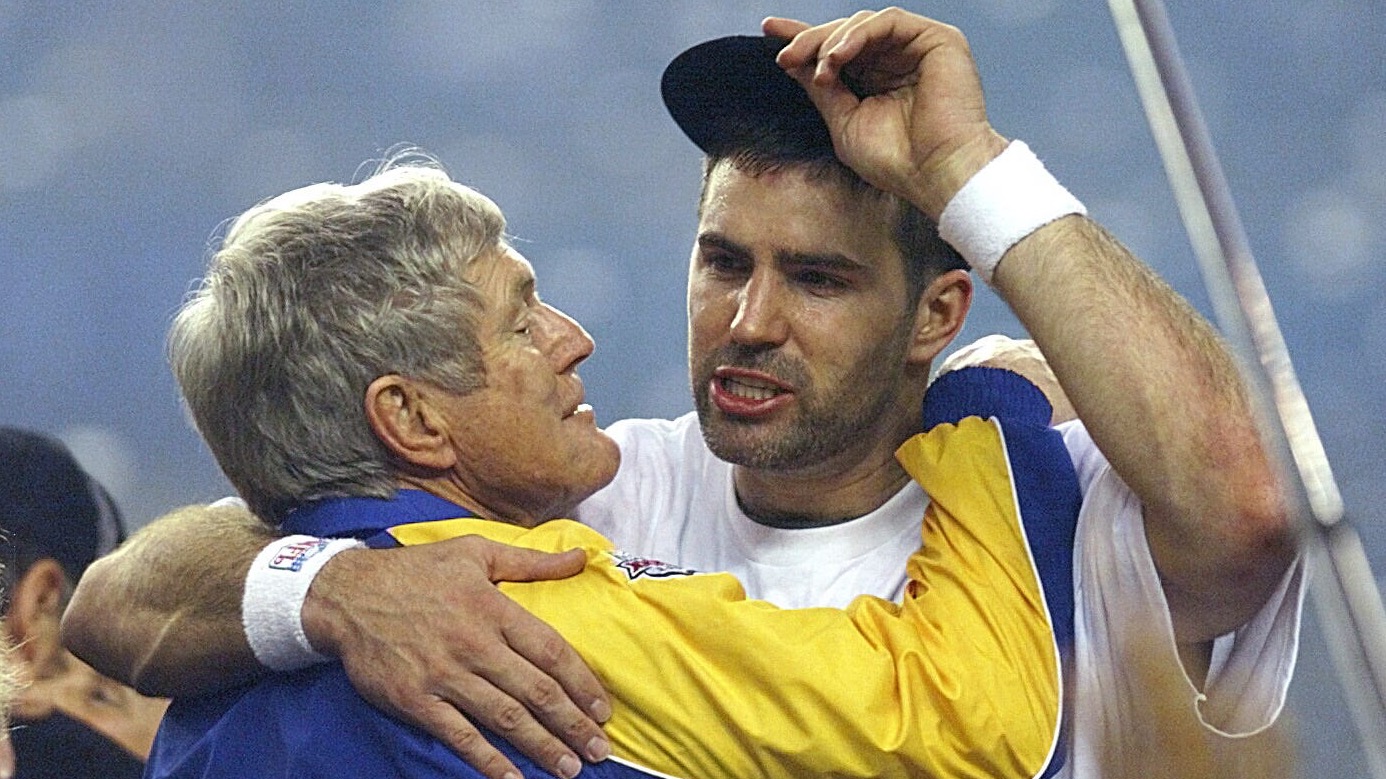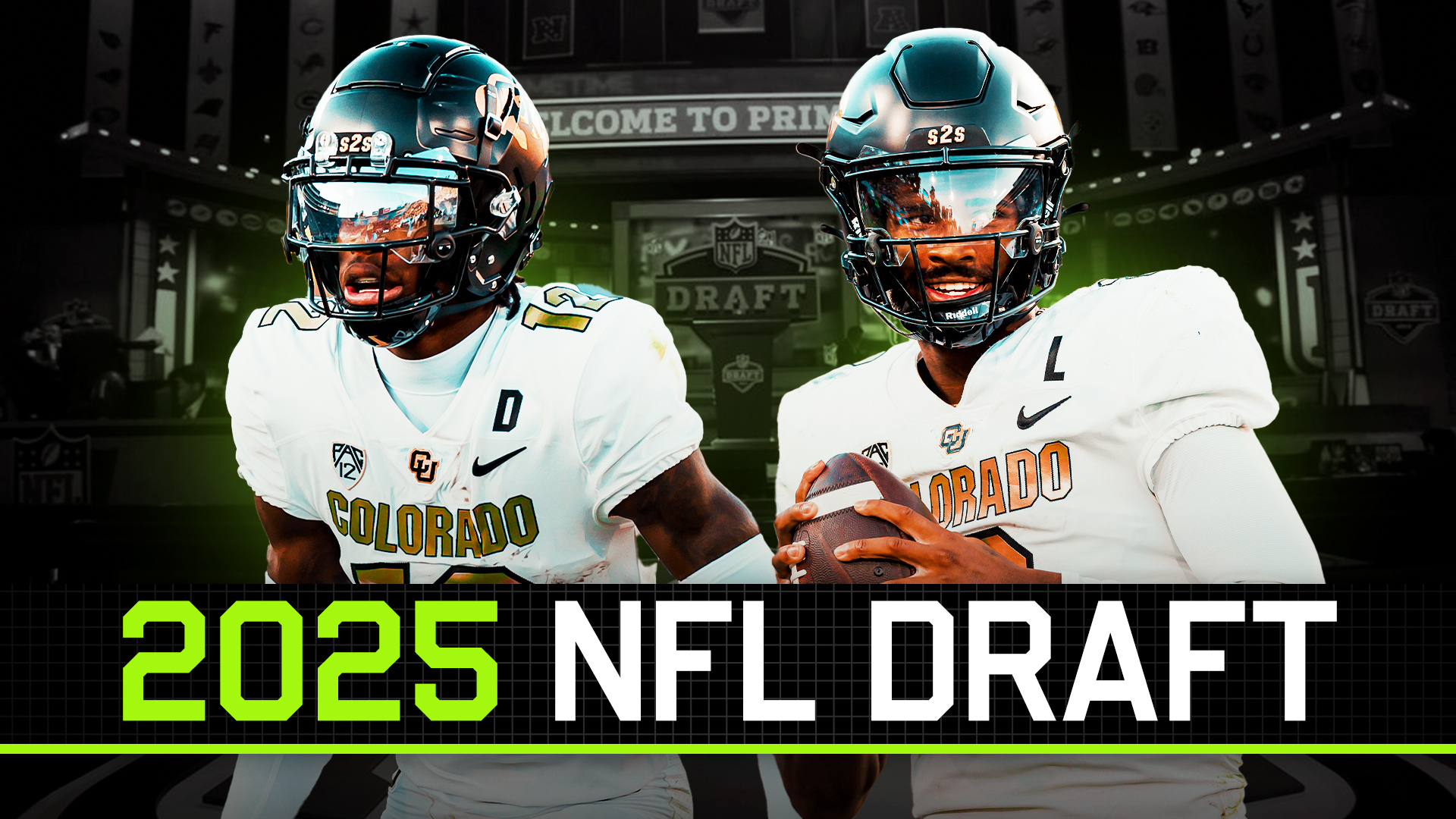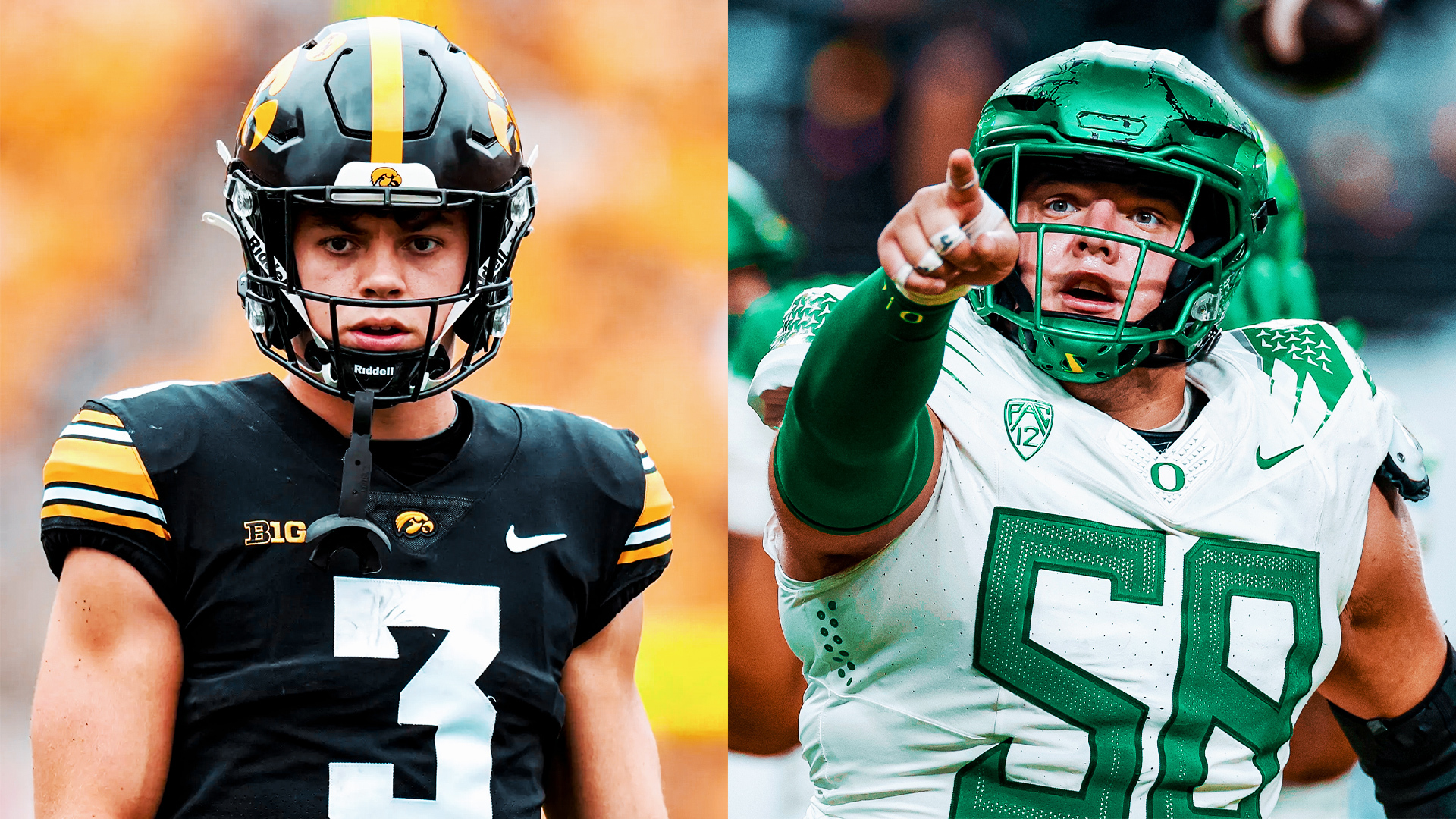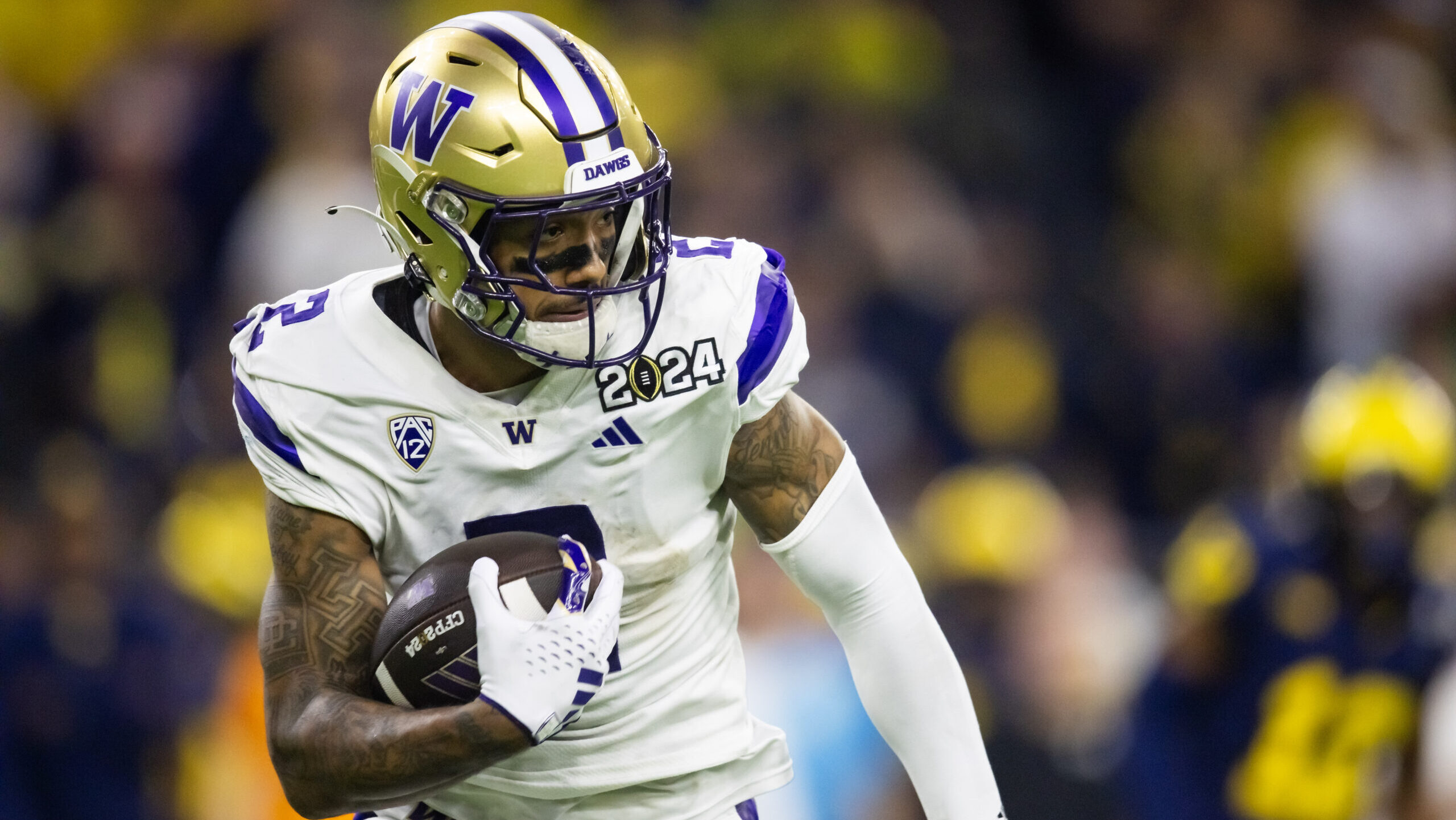Analysis
9/23/23
9 min read
How NFL Teams Have Started To Solve Philadelphia Eagles' Offense
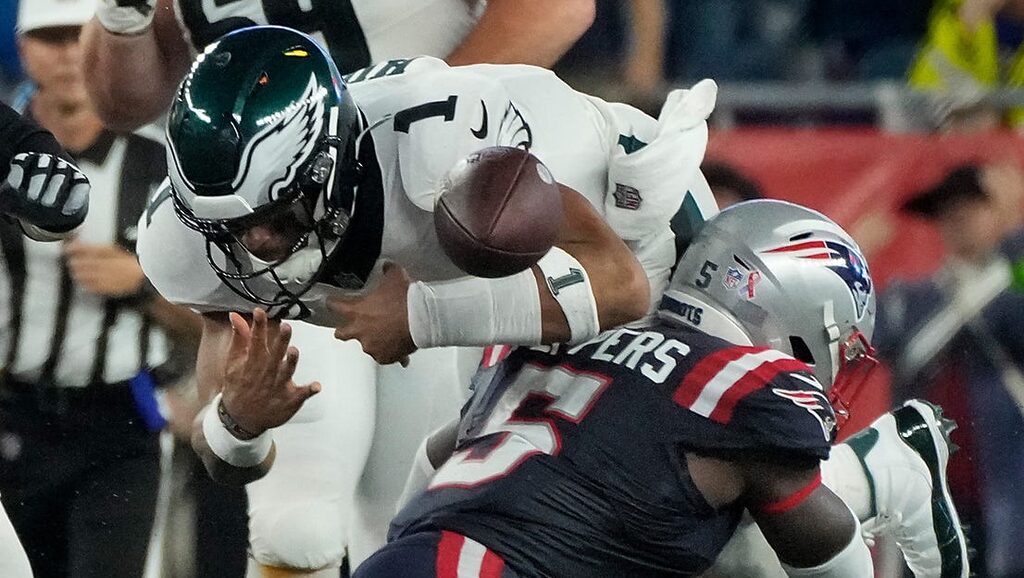
Given that the Philadelphia Eagles are 2-0 and averaging a point more per game than they did last year when they finished third in the league in scoring, it might seem a little silly to sound alarm bells about the early performance of the Eagles’ offense.
They’re averaging 29.5 points per game. Their quarterback, Jalen Hurts, has a 71.5 completion percentage. They’re second in the league in rushing after amassing 259 yards on the ground in a 34-28 win over the Minnesota Vikings last week.
Problems? What problems?
“Everyone is just expecting this team to blow everybody away,’’ said Mike Quick, a five-time Pro Bowl wide receiver for the Eagles, who has been the team’s radio analyst for the past 27 years. “Pass 'Go' and get back to the Super Bowl. But it just doesn’t work that way.
“After the success they had last year, you’re the team everybody’s hunting. You’re no longer the hunter. Everybody else is trying to prove themselves at your expense. Every week, they’re going to get their opponent’s best shot.’’
The Eagles had one of the most explosive — and difficult-to-defend — offenses in the NFL last season; they won 14 of 17 regular-season games and then put up 104 points in their three playoff games, including a 38-35 loss to the Kansas City Chiefs in the Super Bowl.
Philadelphia could beat you with the run or the pass. Hurts, the runner-up to the Chiefs’ Patrick Mahomes in MVP voting, was a dual-threat nightmare who finished second in rushing touchdowns (13) and third in rushing first downs (67) and averaged 8.0 yards per attempt. The Eagles’ 63 completions of 20 or more yards were the second most in the league. Only Mahomes and the Chiefs had more (73).
The Eagles’ RPO (run-pass option) game was next to impossible to stop. The team averaged 9.4 yards per pass attempt and 4.4 yards per carry on a league-high 185 RPO plays. There also was the much-talked-about Tush Push — the quarterback sneak with friends — which turned third- and fourth-and-1s into practically automatic first downs.
The Tush Push still is going strong. The Eagles successfully used it three times in Week 2 against the Vikings, including on a pair of one-yard touchdown runs by Hurts. But many other aspects of the offense aren’t running nearly as smoothly as last season.
While Hurts’ completion percentage is up, most of his other numbers are down. He’s 21st in yards per attempt (6.5). He has thrown just two touchdown passes in the first two games, has just three completions of 20 or more yards and has been sacked seven times.
Wide receiver A.J. Brown, who averaged 17.0 yards per catch and had 23 receptions of 20-plus yards last season, including seven of his 11 touchdown catches, is averaging just 9.8 yards per catch through the first two games.
Dallas Goedert, who had the highest yards-per-catch average of any tight end with more than 40 catches last season (12.8), is averaging just 3.7 yards per catch. Against the New England Patriots in Week 1, he had zero catches for the first time since 2019. He had six catches against the Vikings last week but for only 22 yards. Just eight of those 22 yards were after the catch.
The Eagles’ third-down percentage has dropped from 45.9 last season to 37.0 this year. Hurts has completed seven of 10 passes on third down, but only two of those seven completions have produced first downs.
The Eagles’ RPO game also has sputtered. They are averaging just 3.9 yards per play, down from 8.1 last year.
Last but certainly not least, aside from the quarterback sneaks, Hurts hasn’t had the room to run he had last year. He’s averaging just 3.4 yards per carry and has just one run of 10-plus yards in the first two games. He had 26 last year.
“The RPO game was so good for the Eagles last season,’’ Quick said. “But teams have spent time in the offseason figuring out how to slow that down, how to come up with some way where [Hurts] isn’t going to have those big running lanes.
“That [defensive] player that they were always able to have in conflict if that player played the run, they were going to throw a pass behind him. If that player played the pass, they were going to run the ball in front of him. Defenses now are starting to take that away.
“So, what’s the next move for them? It’s their move. Having these 11 days [between their Thursday night game against the Vikings and their Monday night game against the Tampa Bay Buccaneers] gives them the opportunity to look at what teams tried to do to them in the first two weeks and understand that and try to come back with a countermove.’’
The Patriots and the Vikings played mostly zone coverage against the Eagles so that their linebackers and defensive backs could keep their eyes on Hurts and react quickly if he took off. They also did a good job of defending his zone-read runs.
Quick is right. Because of the Eagles’ success last season, they are the hunted this year. Opposing head coaches and defensive coordinators spent a significant amount of time in the offseason studying the Eagles’ offensive tape, trying to find ways to slow down Hurts & Co.
Opening the season against Bill Belichick, one of the best defensive minds in history, and then against one of his former assistants, Vikings defensive coordinator Brian Flores didn’t help.
“It was classic Belichick when they played the Patriots,’’ said NFL Network analyst Brian Baldinger. “[New England] basically played an umbrella [coverage], basically played zone. They didn’t let anything go over their head.
“They bracketed [Brown] and weren’t going to let him beat them. They went with one linebacker most of the time. So they said, 'OK, we’re going to play a five-man front, and we’re going to make you hold the ball.'
“And [Hurts], right now, isn’t very patient. He’s leaving the pocket too quickly. Good things can happen a lot of times when he does that. But the Patriots had 11 eyeballs on him everywhere he went.’’
Hurts has not looked particularly sharp in the first two games, regardless of what his completion percentage might suggest.
His decision-making has been erratic. He has not trusted his protection and is to blame for several of his seven sacks. He’s made some predetermined throws instead of going through his progressions. Twice against the Patriots, he failed to see a wide-open Goedert down the field because he had locked on to Brown and DeVonta Smith.
Quick thinks part of Hurts’ early problems has to do with the fact that he didn’t play a single snap in the preseason — most of the Eagles’ starters didn’t — because coach Nick Sirianni elected to use joint practices with the Cleveland Browns and Indianapolis Colts to get them ready for the season. After the sloppy performance in Philadelphia’s 25-20 win over the Patriots, Sirianni admitted he may have to re-evaluate his thinking next year.
“Offensively, [the first two games] have looked like preseason football,’’ Quick said. “Back when I played, the preseason games mattered because they helped get your timing right. They helped you get up to the speed of the game.
“I understand the thinking with the joint practices and their value. But they don’t mirror games. They don’t give you the same energy, the same sense that a game gives you.’’
Brian Johnson, the team’s quarterbacks coach the last two seasons, was promoted to offensive coordinator in the offseason after Shane Steichen left to become the head coach in Indianapolis. But the offense the Eagles are running under Johnson is the same one they ran under Steichen. So adjusting to a new coordinator isn’t a factor here — particularly when you consider that Hurts has known Johnson since he was four years old.
“They just have to be better at designing pass plays and getting the ball out more on [time] than they’ve shown so far,’’ Baldinger said.
The 11 days between games have definitely given Sirianni and Johnson time to self-scout and tweak any part of the offense they feel may need tweaking.
“This Monday night, if I was an Eagles fan, you should see a change this week,’’ Baldinger said. “If they’re going to be a good offense, they should do it this week against a really good front in Tampa.
“If Jalen Hurts is going to have another MVP-type season, they should just carve this defense up. The Eagles are good enough up front to block [the Buccaneers’] Joe Tryon-Shoyinka and Vita Vea and Shaq Barrett and those guys. The Buccaneers are a classic zone defense. It’ll be, ‘This is where the holes are. Get the ball out on time.’’’
Goedert is one player who needs to become a bigger part of the offense, particularly early in the game.
“He’s too big of a weapon [to ignore], and there are so many ways to utilize him,’’ Quick said. “It just makes sense [to get him the ball]. You have to use your best targets, and he’s certainly one of the best. In the screen game, I don’t know if there’s anybody better than he was last year.’’
Goedert had 55 catches for 702 yards last season. Sixteen of those 55 catches and 174 of those 702 yards came on screens.
“Part of the problem is Goedert doesn’t seem to be the first read enough,’’ Baldinger said. “They need to get it to him on those simple six-yard turnarounds that every team has in their playbook.
“It’s the kind of drive-starter that the Chiefs do with [Travis] Kelce all the time. But the Eagles don’t really start drives like that. I’m not sure why. We’ll see if that changes Monday night.’’
Paul Domowitch covered the Eagles and the NFL for the Philadelphia Daily News and Philadelphia Inquirer for four decades. You can follow him on Twitter at @pdomo.



